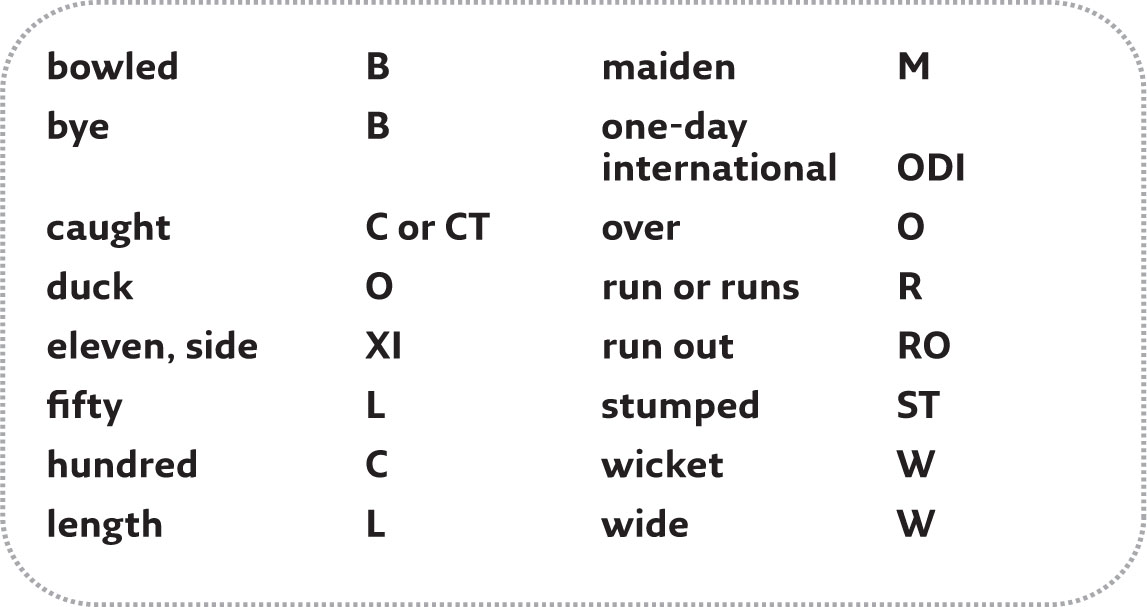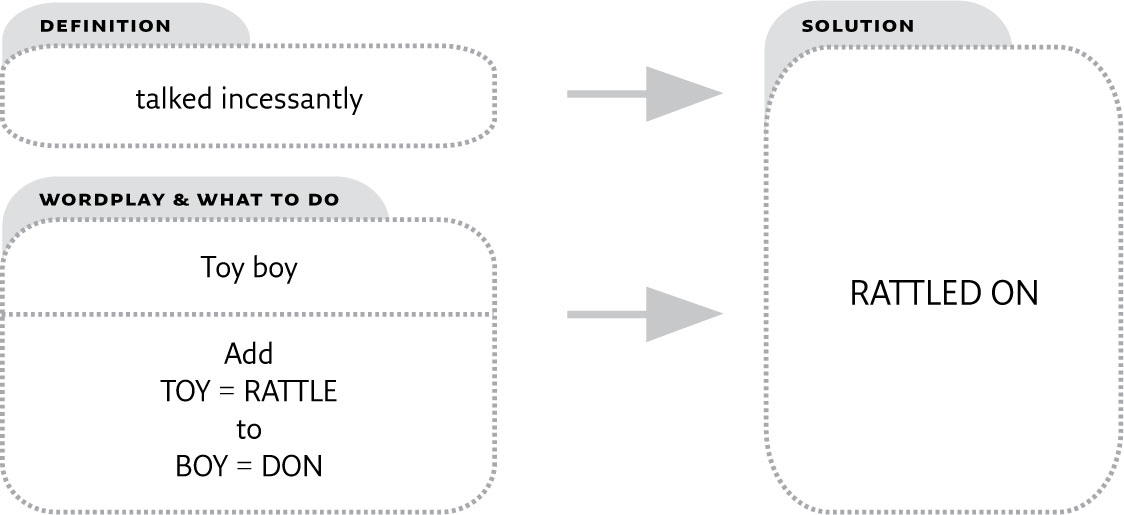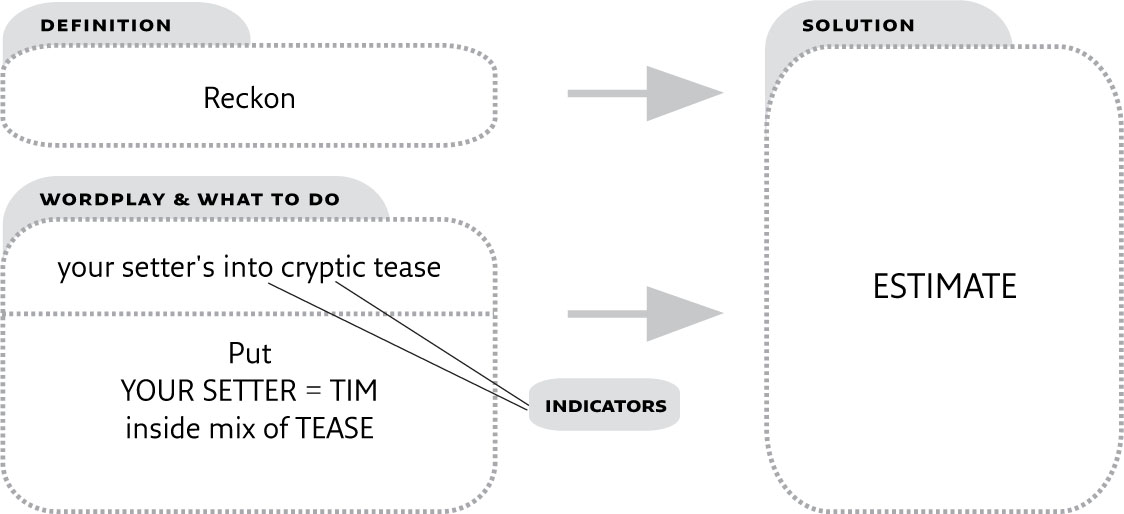
“Crosswords are notoriously worked at by quite humble members of society.”
Times Leader 1928, referring to the USA
Some items which are common to many puzzles and which, after a time, you will take for granted are covered in this next chapter. Just as it takes London cabbies some years to acquire all the information needed for their task, so it is with crosswords. What follows is a randomly ordered set of items that I hope helps you along the way to becoming a solver of excellence.
1. Numerals
Numerals, chiefly roman, are common so in alphabetical order you will find:

Numbers such as eighteen (XVIII) are unlikely to be met for obvious reasons.
2. Compass points
Equally common are compass points. The abbreviations for north, south, east and west and their two-letter combinations need no listing here but look for point or quarter which can do duty for any of the four. This can involve testing each in turn to see whether it yields part of, or the full, solution. Very occasionally you may need to think of three-letter compass points, as in this clue:
SANDWICH CLUE: Wind bearing round spit (7)

N,E,W and S are Bridge players too (see here).
3. Foreign languages
Some knowledge of foreign languages is needed but only of simple words in the more familiar, usually European, languages. Thus German articles der, die or das; French ones le, la or les; and Spanish el, la or los; and the equivalent indefinite articles in these languages are regarded as fair game, as are common French words such as oui, rue and et. Look out for misleading indications of Frenchness such as Nice, Angers and Nancy. Here’s a more straightforward example:
ADDITIVE CLUE: Misery of the French couple (7)

Military types can appear in their abbreviated form as below but also more generally as soldier(s), officer(s), rank, unit(s) and the like.

5. Rivers
Rivers feature in crosswords as the abbreviation R and also, because of their size, the Po, Exe or Dee. As always it’s trial and error that unlocks which particular one is required. Another more esoteric expression of river is flower (see Chapter 10, here).
6. Alphabets
A brief recall of some alphabets may come in handy. In particular:


Though many sports and games do appear in crosswords (golf and tennis perhaps more than soccer or rugby), the quaint often short terms and frequent abbreviations used in cricket are a gift to setters. Non-cricket loving participants on my workshops tell me this is a cause of frustration, so here are the cricket abbreviations likely to be encountered:

In addition, these cricket terms are common: batting (IN), cricket side (LEG and ON), extra (BYE), ton (C = one hundred) and deliveries (OVER).
8. Chemical elements
Remember your chemical elements? Here are those most beloved of setters:

The following wonderfully misleading effort uses one of these:
SANDWICH CLUE: Saw dog restrained by lead (7)

9. The City of London
Though now effectively split across several postal areas including Canary Wharf, in crosswords it is still thought of as the old Square Mile; actually not even all of it (EC2), just EC for City or The City in wordplay, as below in a clue with a debatable sentiment:
ADDITIVE CLUE: The City still makes us deliriously happy (8)

10. Chess
Chess notations that appear are: bishop (B), king (K), knight (N), pawn (P), queen (Q), rook (R). In addition, the word board in a clue may well be referring to chess.
11. Names
In part of the wordplay, names of boys and girls, arguably unfairly, can be indicated by the terse boy or girl, etc. Probably Ed, Ted, Di and Ian (the latter surprisingly reckoned often to be a Scotsman) are the most common but the best advice is to work back from other aspects of the clue to find the name in question. In this rather hard clue, you would need to find the definition first before coming to the particular lad:
ADDITIVE CLUE: Toy boy talked incessantly (7,2)

… and here’s a less common name in an enjoyable clue:
SANDWICH CLUE: Wide-angle picture of girl kept by her parents (8)

12. Setters
Despite the fact that many newspapers do not reveal the names of their setters, he or she does appear in clues. This can be as Yours Truly, I or me within wordplay. Here’s an example from a newspaper that names its setters:
SANDWICH INCLUDING ANAGRAM CLUE: Reckon your setter’s into cryptic tease (8)

13. Bridge
Bridge notation features in terms of north, south, east and west in abbreviated form and this can extend to Bridge partners as here:
ADDITIVE CLUE: Heart led by opponents at bridge – play again! (6)

Sometimes in harder cryptics, the single word “partners” is meant to be taken as being bridge partners N & S or E & W.
14. Accents and other punctuation
Accents, hyphens and apostrophes are of course included in clue sentences but, by convention, they are not entered into the grid. For example, its and it’s in clues would be entered in the same way (as its) in the grid.
Those states which appear more than others are in the box below:

16. Workers
The word worker could be a reference to the human kind but, more likely, it will be a synonym for ant or bee.
17. On board
Phrases such as on board can be related to chess, e.g. men or pieces, or ships. In addition, SS (= steam ship) can be exploited in wording such as on board in a sandwich clue. Thus a word like train may be inserted between s and s to give strains.
18. Some Latin terms
These are perhaps the most common:
